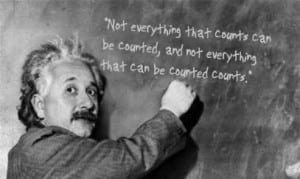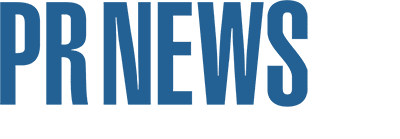
Planning PR campaigns is only half the battle. You also need to prove that your communications efforts have made a difference. Measuring ROI can be one of the most complex issues PR professionals face, especially when you throw social media metrics into the mix. At PR News' Measurement Conference in Washington, D.C. earlier this month Jackie Malloy, research strategist for GM Communications, gave attendees a crash course on metrics during a presentation titled, "Starting on the Same Page: What You Must Know Now About PR Measurement."
Pulling up a slide full of ROI definitions and equations, Malloy said:
"Here’s the definition for ROI. It's not important to read it all, as it is a bunch of accounting gobbledygook,” Malloy said. “That is because it is an accounting measure. I am responsible for research and measurement for GM Communications. While there are a lot of PR measures that I track, I also know that ROI is not a measure I can do. Why? Because it is impossible for me to link every GM sale to what it was that influenced a person to ultimately purchase a vehicle."
Here are some PR measurement tools that Malloy said she finds more valuable:
Benchmarks: In order to know if you've "moved the needle," as Malloy put it, you need to know where you started. Benchmarks do just that: "They help you answer where your brand lives right now—strengths, weaknesses, opportunities, and threats," Malloy said.
Barcelona Principles: Designed by a team of Spanish PR professionals [Correction: The principles were created by multinational PR professionals under the guidance of the International Association for the Measurement of Communications (AMEC)] the Barcelona Principles are specifically designed for communications experts. Look them up, print them out and have them handy when evaluating campaign metrics, Malloy added.
Malloy also stressed that PR measurement is rarely a linear equation. "It's a roadmap," she said. "Numbers tell you 'how much' but not necessarily, 'So what?'"
Follow Lucia Davis: @LKCDavis

Such good points. Starting out in this field, all we focused on were impression numbers. I began wondering, how can we ever know if we’re affecting sales, or what the exposure truly is, or what it’s generating. It’s wonderful to see how thinking about ROI in PR has evolved.
Thanks for reading! I agree wholeheartedly with Malloy on this too.
Thanks for reading Frazer. Mistake noted!
Jackie, you are PR measurement
practitioner’s darling!!! , very few experts come out and speak in Black
& White about PR measurement metrics. ‘ROI on PR’ is fashionable phrase
today in the industry. Majority of experts speak at length on the subject and
insist the use of metric but fail to highlight
the fact that in most of cases its very difficult to get fair idea about budget
allocation/ expenditure for a specific campaign. With corporate communication
landscape registering a paradigm shift towards a more integrated media approach
its highly complex to link unit of sale to a specific PR effort. I believe we need
to move in direction of putting our efforts toward evolving
research based measurement approach that help corporates
to plan and design their
communication strategies.
Thanks for reading, Kamal. Jackie is pretty awesome!!